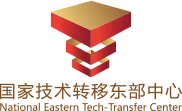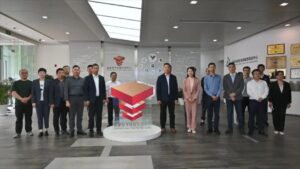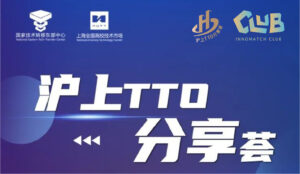i. summary of innovation vouchers
The innovation voucher policy is a government innovation investment policy based on the innovation needs of SMEs. The so-called innovation voucher is a government innovation service policy designed in response to the lack of economic strength, innovation resources, and incentives for universities and R&D institutions to serve SMEs in the country.
In May 2015, the Shanghai Municipal Party Committee and the Shanghai Municipal Government released the Opinions on Accelerating the Construction of a Science and Technology Innovation Center with Global Influence, which proposed to "promote the development of science and technology intermediary service clustering". In order to revitalize innovation resources, starting from last year, the Eastern National Technology Transfer Center (hereinafter referred to as the "Eastern Center") has spent more than a year researching and mapping, clarifying the prominent problems currently restricting the transformation of scientific and technological achievements, and through scientific system design, launched the first-ever innovation voucher for technology intermediary services in China, focusing on the field of technology transfer, and will The key elements constituting the transformation of results are effectively linked, combined and optimized, and efficiently allocated so as to break the key nodes of results transfer and transformation and realize the whole chain of innovation value.
The Shanghai Innovation Voucher for Technology Intermediary Services is entrusted by the Shanghai Municipal Science and Technology Commission to be administered and operated by the East Center, encouraging enterprises to purchase valuable services in the fields of technology transfer and technology consulting, and was officially launched in March this year. Based on careful planning and preparations, the platform has gathered a number of high-quality technology intermediary service providers that operate in the market, with nearly 70 service providers registered, more than 50 companies' project needs, and 19 successfully audited and connected.
II. Features of Innovation Vouchers
In the preliminary research, we found that: compared to the supply side of universities and research institutes, there is still a lot of room for Shanghai enterprises to improve in the transfer of results on the demand side. There are two main reasons for this.Firstly, there is asymmetry of information between enterprises and university research institutes, lack of professional service institutions and communication channels; secondly, the innovation capacity of enterprises is relatively weak, the consciousness of transformation of results is still not clear enough, and the demand for innovative results and the ability to undertake needs to be improved.To address this key issue, the East Center has drawn on various institutional mechanisms of innovation vouchers at home and abroad and created the first innovation voucher for technology transfer and science and technology consulting, giving full play to the role of science and technology intermediaries in matching supply and demand in the results transformation chain, helping enterprises to find and clarify the direction of innovation, sort out and mobilize innovation with the help of external "brains". resources to help boost its independent innovation strength.
Compared to other provincial and municipal innovation voucher policies in China, this innovation voucher can be summarized in the following three features.
First, the innovation voucher subsidy itself, which has achieved high, forward, fast and new breakthroughs.
Secondly, the innovative voucher operation has achieved a breakthrough in the form of full management and pooling of funds by market-based entities.
Thirdly, the innovation voucher benefit drives more than 1:1 S&T service procurement investment by enterprises, supports the marketing of high-quality S&T services, and promotes the forward movement of the results transformation chain. As the main operator of the innovation vouchers, the East Center has determined the content of policy support based on extensive preliminary research; determined the application and use process of the innovation vouchers based on the procurement route of science and technology services; and recorded the flow of innovation vouchers in the form of an online platform to ensure evidence-based supervision.
|
|
Technology intermediation services Innovation Voucher |
Other provinces and cities in the country Innovation Voucher |
|
Applicable to |
Science and technology enterprises (regardless of size, annual turnover, industry, etc.), science and technology intermediaries. |
Small and medium-sized enterprises, high-tech enterprises, enterprises supported by the local government, science and technology service organizations (mostly universities, research institutes, science and technology service organizations, etc.). |
|
Support Direction |
Eight major areas of support: technical personnel training, technology strategic planning, technology search, targeted screening, strategic science and technology research, competitive intelligence analysis, management consulting, and engineering technology consulting. |
No technology transfer orientation |
|
quota |
Floating quota, the initial quota is divided into two categories: the initial quota is $100,000 for technology enterprises with a main revenue of 30 million (inclusive) or less in the previous year, and the initial quota is $300,000 for technology enterprises with a main revenue of more than 30 million in the previous year. The amount of innovation vouchers that can be applied for each service is limited to 50% of the service contract price and does not exceed the balance of the innovation voucher credit granted in the current year. The specific amount will be determined based on the online bidding, online direct connection or on-site evaluation comments |
Fixed amount, denominations ranging from $300,000, $200,000, $100,000, $10,000, $5,000, $1,000, and $500 |
|
Issuance and encashment cycle |
Pre-application, pre-subsidy, granted to enterprises at the same time as the contract enters into force. Multiple annual batches based on applications |
Ex-ante application, ex-post subsidy Most are bi-annual, some are once a month. |
|
regulatory body |
Hosted and operated by the National Center for Technology Transfer East, a market-based, third-party organization |
Central or local government agencies |
|
operating mechanism |
Establishing an institutional screening mechanism: guiding technology transfer service providers to compete in an orderly manner; project matching: matching service providers' capabilities, specialties and enterprise needs to improve their business volume and the accuracy of business matching; capital control: introducing expert evaluation mechanisms and social disclosure mechanisms to reduce risks and enhance the effectiveness of capital use. |
/ |
- Innovation vouchers "fill in the gaps"
Technology intermediated service innovation vouchers have made up for the "shortcomings" in the development and transformation of innovation vouchers from the perspectives of policy design, operation and policy effectiveness.
|
Innovation vouchers in development Problems |
Innovation vouchers for technology intermediation services Policy design and operations |
|
|
Problems with the redemption time of innovative coupons: too much time between redemptions |
Adopt pre-application and pre-subsidy, and according to the application, cash out in batches for more than one year to solve the problem of cashing out time. |
|
|
Problems with the standardization of the use of innovation vouchers: there is a phenomenon of different use of innovation vouchers, and the amount of innovation vouchers issued is large |
A dedicated innovation voucher operation team has been established to establish a sound management system for the entire process of institutional selection, project matching and funding control, and to make public announcements of the institutions in the pool, the projects to be contracted and the funds to be disbursed to accept social supervision. |
|
|
The use of financial resources: the use of budgetary funds is limited by age. |
Commissioning a third party to operate and establish a pool of funds |
|
|
Cumbersome implementation processes by management: management of government agencies, long administrative processes |
The East Center operates in a market-oriented manner and builds a technology intermediary service platform to form a "platform" innovation voucher funding method, which eliminates the need to go through an administrative process in the form of planned projects for each redemption and allows government departments to make a record only, thus enhancing the flexibility and convenience of policy tools. |
|
|
Transformation of results Problems |
Technology intermediation services Effectiveness of innovation vouchers |
|
Asymmetrical information on results, lack of professional service organizations and communication channels between enterprises and university research institutes. |
Relying on the advantages of the East Center's platform, we will break the information asymmetry between supply and demand, match the capabilities of service providers, specialize in the direction and the needs of enterprises, and distribute services to improve the accuracy of docking. On this basis, the East Center will also actively explore the possibility of cooperation among technology intermediary service providers based on different service objects, industries and service directions to form service micro-clusters and promote the transformation of results. |
|
The innovation capacity of enterprises is relatively weak, the awareness of the transformation of results is still not clear enough, and the demand level of innovation results and the ability to undertake needs to be improved. |
The eight major directions of support for innovation vouchers are interlinked around the core of promoting the transfer and transformation of scientific and technological achievements and technologies: through "technical talent training", training is provided to senior personnel with technical backgrounds in technology enterprises to achieve recognition of technology intermediary services among technology enterprises and raise their awareness of transfer and transformation. "Science and technology strategy study" and "competitive intelligence analysis" analyze the current industry and market to help enterprises identify their own needs; then, under the guidance of "technology strategic planning". Enterprises can identify the specific direction of the next step in implementation; in specific technology transfer projects, companies can use external brains to identify technology targets through specialized customized services such as "technology search" and "targeted screening". "Engineering technology consulting" is to find suitable solutions for enterprises' problems in technology from small-scale testing, pilot testing to industrialized products. Enterprises can clarify their needs in the light of the actual situation, make targeted applications and improve efficiency. |
|
Results transfer policies focus on enterprises and technology sources, with few practical policies for technology intermediary services. |
Through the pre-subsidized innovation vouchers, enterprises' input-output ratios can be increased, the purchasing habits of technology enterprises and their recognition of the value of quality services can be cultivated, and the development environment of the technology service industry can be improved, thereby helping to improve the service quality of the technology intermediary sector, and the innovation voucher policy has filled the vacancies of technology intermediary services in the technology transfer chain. |
NTMT East will publish a biannual magazine called "East Observation". Based on tracking and researching the technology transfer industry, domestic and overseas development history, model changes and cutting-edge trends, East View observes the actual case patterns of technology transfer from a new perspective and explores its internal rules, providing in-depth and readable articles on the technology transfer industry.





